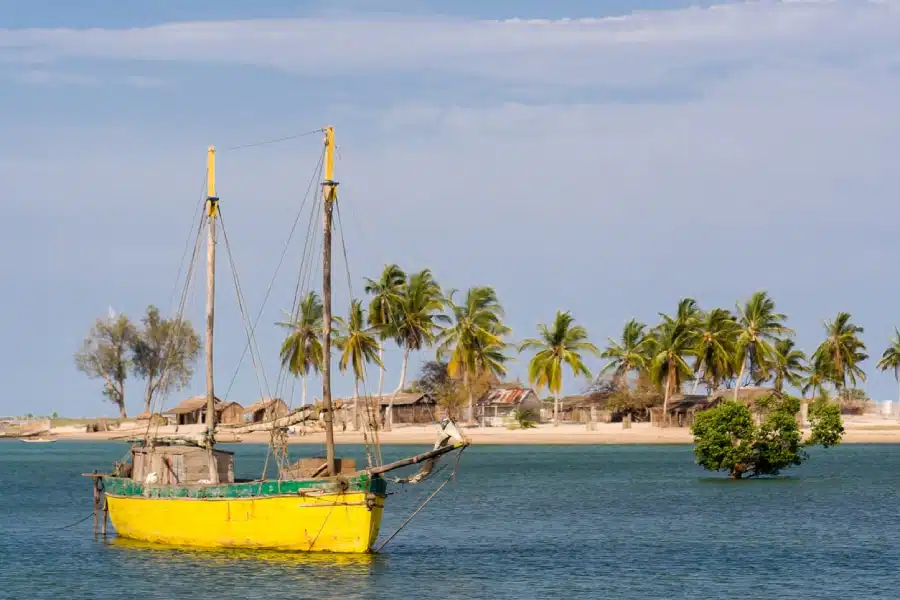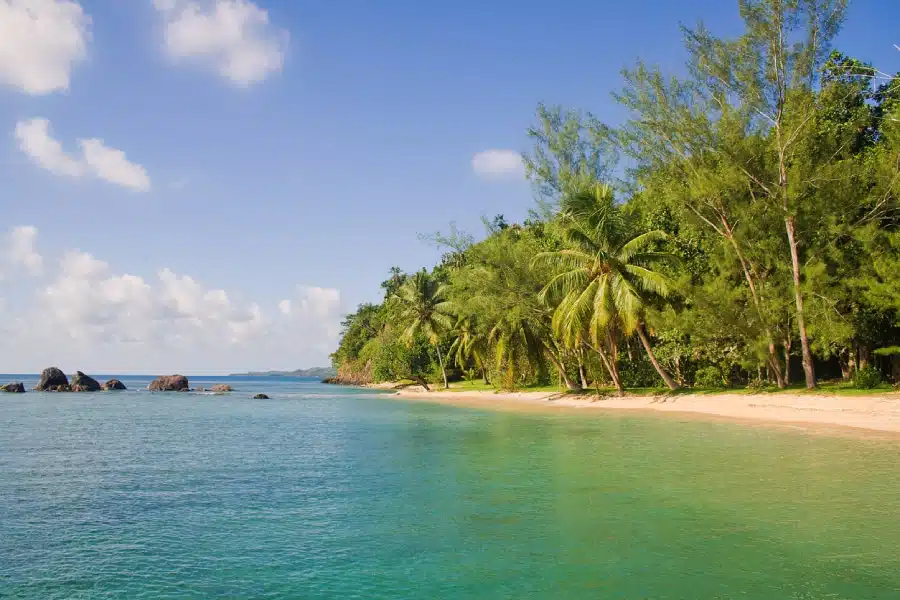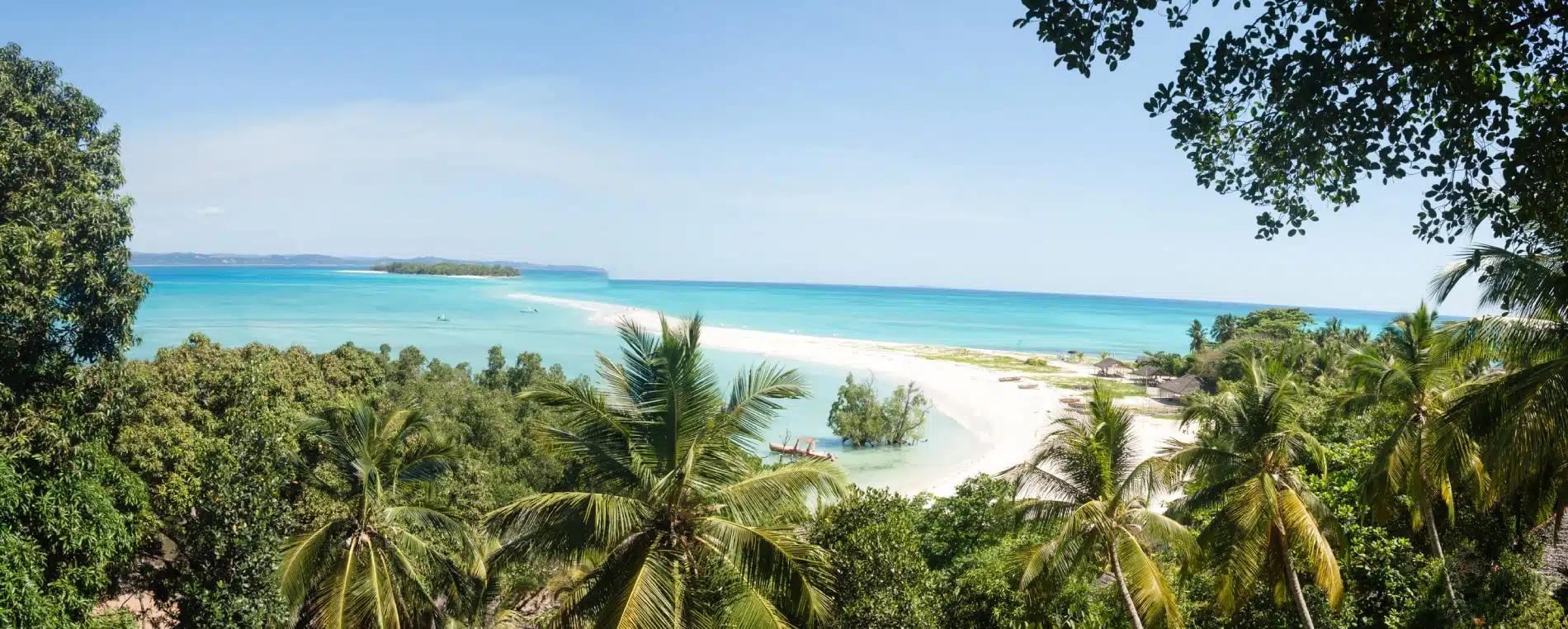Exploring the island-continent’s hidden regions
Endless beaches, pristine jungles and villages on the end of the world. Madagascar has many secrets to unveil along its legendary coastline. Here are seven perfect destinations where you can discover all its splendours, far from the beaten track.
Meet the Vezo, one of the oldest peoples on the island
This is one of the oldest settlements in Madagascar, one of those eternal villages where time passes differently. Nestled on the island’s south-west coast at the mouth of the Onilahy River, the hamlet of Saint-Augustin subsists from fishing and is lulled to sleep by the sound of the waves. Most of its inhabitants belong to the ancient ethnic group of the Vezo and live according to the traditions of their ancestors with a semi-nomadic lifestyle that includes long ocean expeditions. Around their makeshift huts rise the tall sand dunes of Sarodrano, white hills with contours that shift with the wind. An unspoilt landscape where simplicity leads to the essentials of life.
Taking in the natural mosaic of Madagascar
A nature reserve lying in the heart of the savannah, Ankarafantsika National Park boasts an astounding diversity of landscapes. From dense jungles to infinite plains, dozens of endemic species coexist in these stunning, pristine natural surroundings. With its centuries-old trees, gaudily-coloured birds, crocodiles and lemur colonies, the area offers a remarkable snapshot of Malagasy fauna and flora. Perhaps the most splendid of all the spots in the park is Lavaka of Ankarokaroka, a spectacular red sandstone valley with strange, otherworldly reliefs. The park is irrigated by several lakes, whose waters are considered sacred by local people. One of them, Ravelobe, is named after a legendary bandit who operated in the surrounding area.
Tasting the sweetness of life on the coral islands
A tropical paradise with a Caribbean feel, the coral reefs of the country’s northwest coast are an irresistible backdrop for relaxation. First stop: the magnificent Nosy Komba, a small volcanic island with white beaches. Its inhabitants earn their living from fishing and handicrafts, and in particular from their sumptuous embroidered tablecloths.
Close by is Nosy Tanikely, a tiny spur of coral around which extends a marine reserve known for its exceptional biodiversity; abundant dolphins, sharks, fish and multicoloured corals can be seen here. And finally, head to Nosy Faly, a small, pristine, sacred island where you can often see the flamboyant colours of the panther chameleon.
Travelling back in time in Belo
A breathtakingly beautiful town tucked away at the end of a bay, Belo sur Mer lives and dreams to the rhythm of the tides. Residents live in lightweight houses made of wooden planks and dried palm leaves, with pale colours that blend with the sand. But it is the sea that draws the eye, with its infinite shades of blue and green and a clarity which reveals long sandbanks. Belo is a fishing town, of course, but it also earns a living from a skill passed down through the generations: the building of boutres, traditional sailing boats with African, Arab and even French influences, from the Breton carpenters who lived here in the mid-19th century. Follow the sound of the hammers to find the workshops: they haven’t changed for decades.

Explore the secret island of Nosy Vé
Don’t confuse it with Nosy Bé, the large island in the northwest where tourists often linger. Nosy Vé is something else: an almost deserted island surrounded by a quiet beach where the water is coloured with a thousand shades of turquoise. The pirates of the 18th and 19th centuries also took advantage of its remote location to make it a base for their looting. Today, Nosy Vé attracts bird lovers, thanks in particular to the presence of a (very rare!) colony of red-tailed tropicbirds. This is also a great place to snorkel along the coral reefs where colourful encounters are guaranteed.

Making like a pirate in Sainte-Marie
A strip of land and sand off the east coast, Nosy Bohara (or Île Sainte-Marie to give it its French name) is a perfect spot for some rest and relaxation. With its deserted beaches, birds perched in the palm trees and fishing villages, this is where the heart of authentic Madagascar beats. A visit to Ambodifotatra, the only town in the region, allows you to discover the lifestyle and strategies of the pirates who sailed the seas here in the seventeenth and eighteenth centuries.
Finally, head south to the island of Nosy Nato, a quiet piece of land dotted with fine sandy beaches. It is the ideal place to swim in translucent waters before enjoying an unforgettable meal in a local guinguette. Please note: the island is not connected to the electricity grid and has no running water making this a real off-the-beaten track experience!

Taking a rickshaw ride round Toamasina
A former colonial capital on the east coast, the city of Toamasina (or Tamatave in French) offers an excellent insight into Malagasy urban life. Exploring its historic streets, markets and parks blooming with flowers makes for a pleasant walk or rickshaw ride. If you miss the beach, head to Foulpointe, a coastal village surrounded by white sand (and featuring its own pirate cemetery). In Madagascar, the sea is never far away!
A melting-pot of peoples
If the Red Island seems so authentic and well-preserved, it is largely thanks to its many ethnic groups with their enduring traditions. From the Sakalava (“those of the long valleys”) to the Betsimisaraka (“those who do not separate”), these peoples all live together on the island and often devote themselves to specific activities such as fishing, growing coffee or making jewellery. It is obviously essential to respect their lifestyles, and in particular to help preserve the places and resources they consider sacred.
Photos credits : © Istock

PONANT takes you there
Explore the multiple faces of the Indian Ocean on a cruise with PONANT



